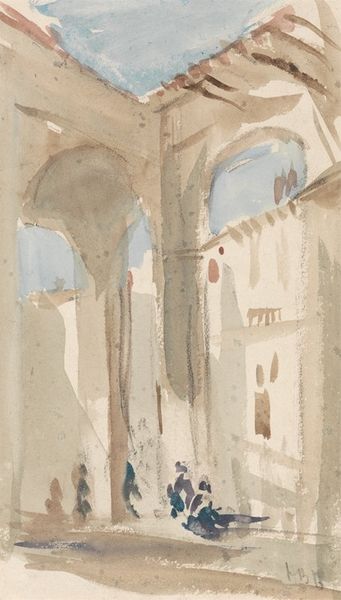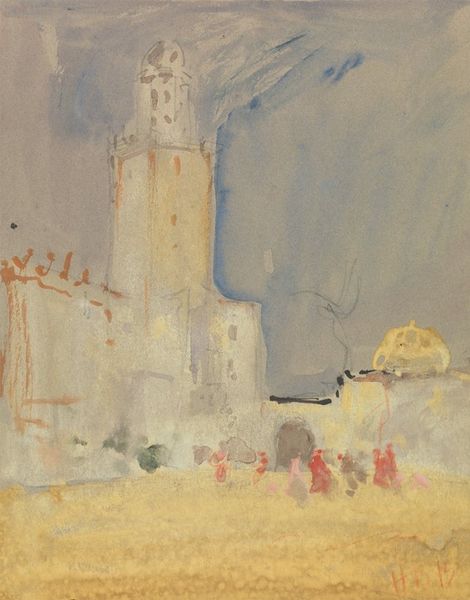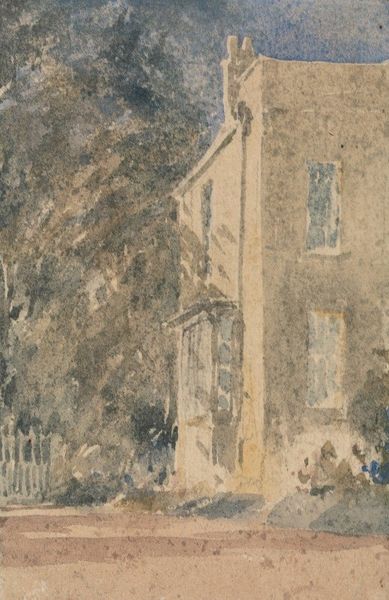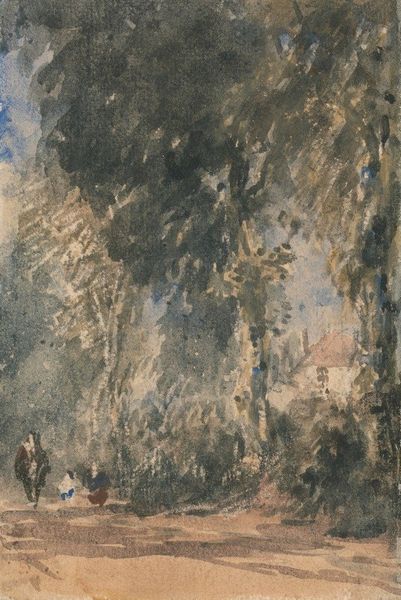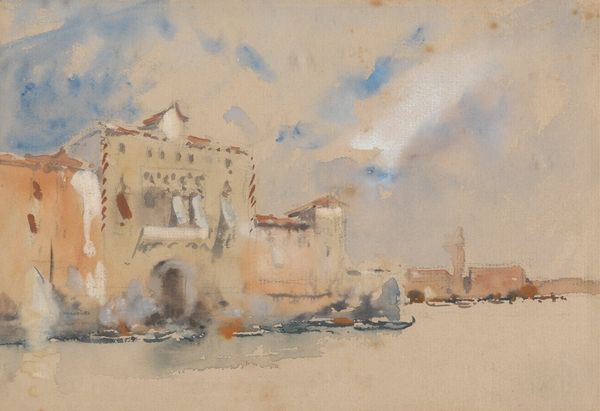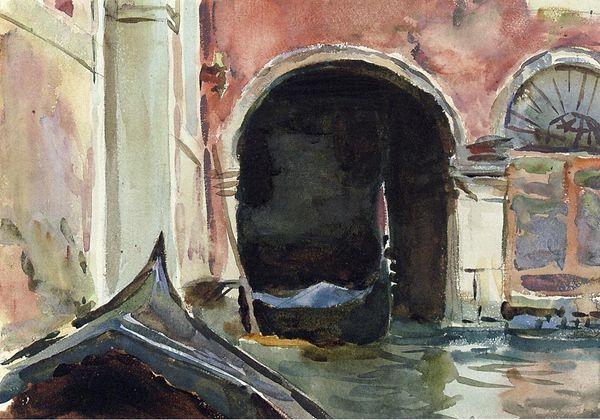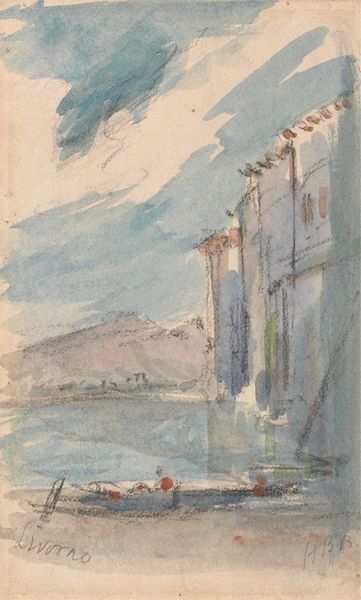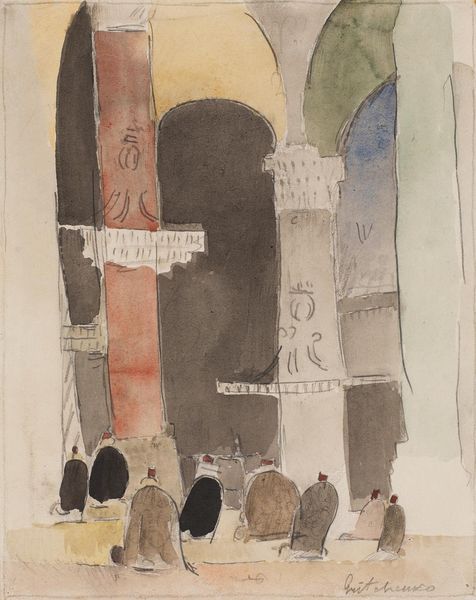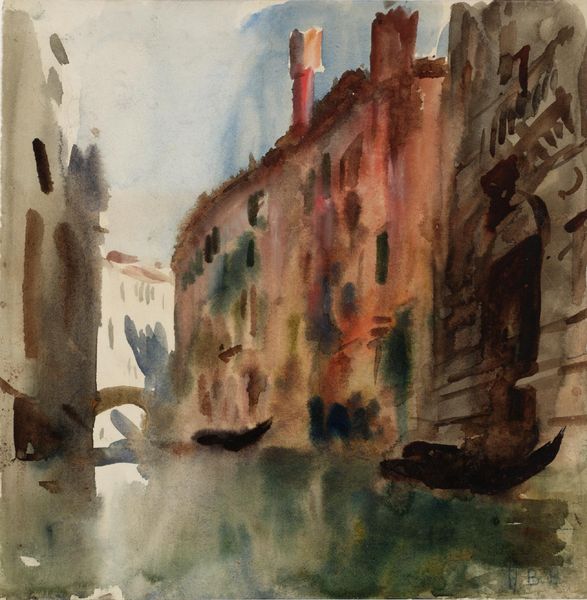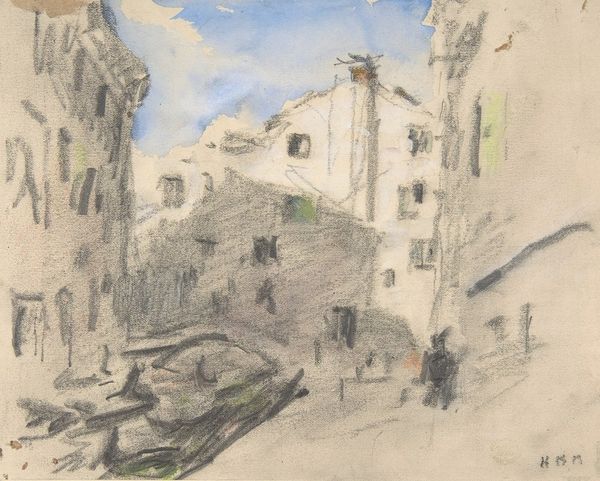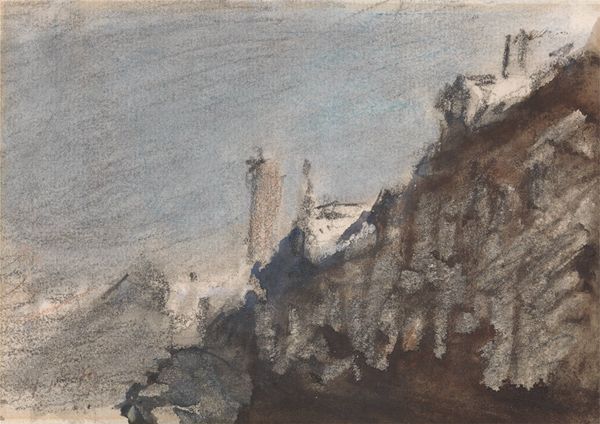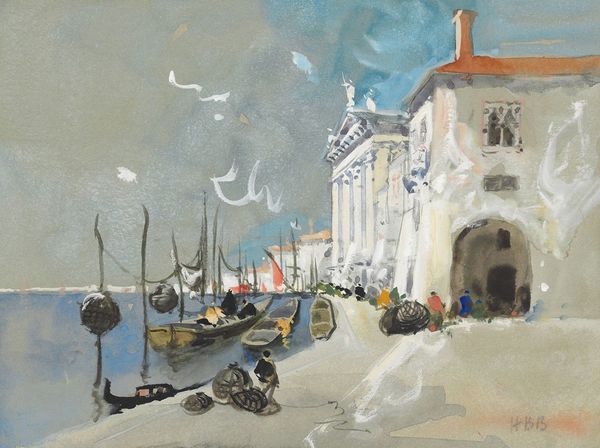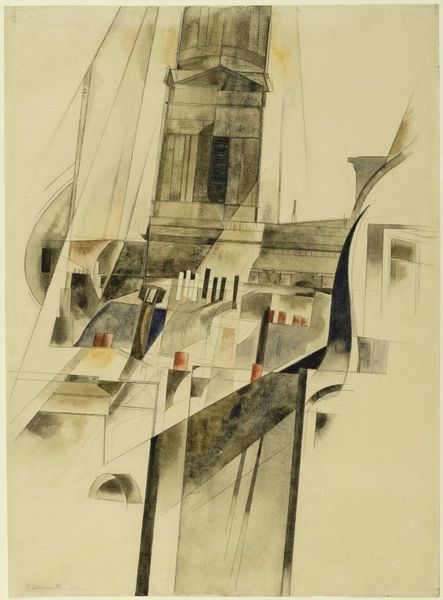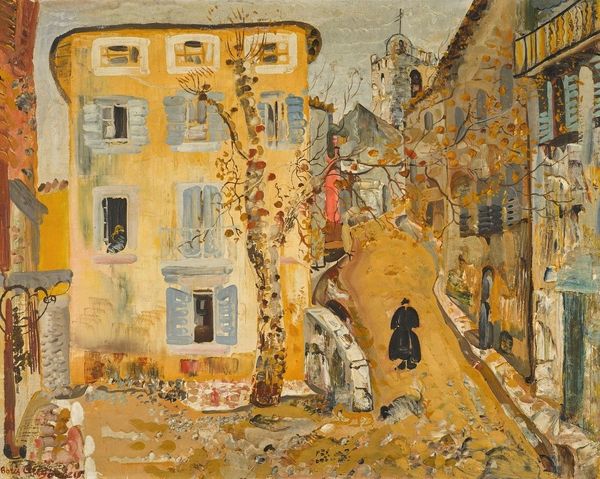
Copyright: Public Domain: Artvee
Hercules Brabazon Brabazon made this watercolor painting of the Grand Canal in Venice sometime in the late 19th century. The material here, watercolor on paper, is really the key to understanding the image. The washes of pigment create a misty, atmospheric effect that perfectly evokes the shimmering light and reflections of Venice. Look closely, and you can see how Brabazon has exploited the inherent properties of watercolor – its fluidity, its translucency, its tendency to pool and bleed – to suggest the city's unique ambience. The rapid, suggestive brushstrokes also speak to a particular mode of artistic production. This is not a carefully rendered, highly finished painting. Instead, it's a quick, impressionistic sketch, capturing a fleeting moment in time. In its own way, watercolor rejects the more industrial and laboured modes of production, evoking a sense of immediacy and spontaneity that aligns it more closely with craft traditions. Ultimately, this work reminds us that the meaning of an artwork is not just in its subject matter, but also in the way it's made, and how its materials and processes speak to wider cultural values.
Comments
No comments
Be the first to comment and join the conversation on the ultimate creative platform.
